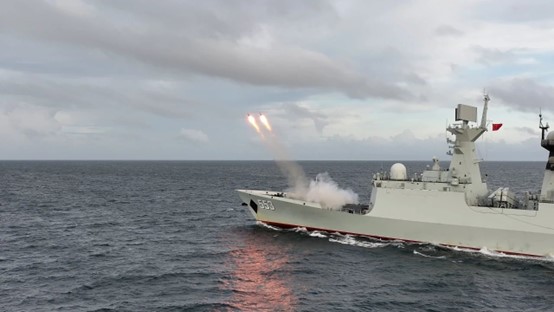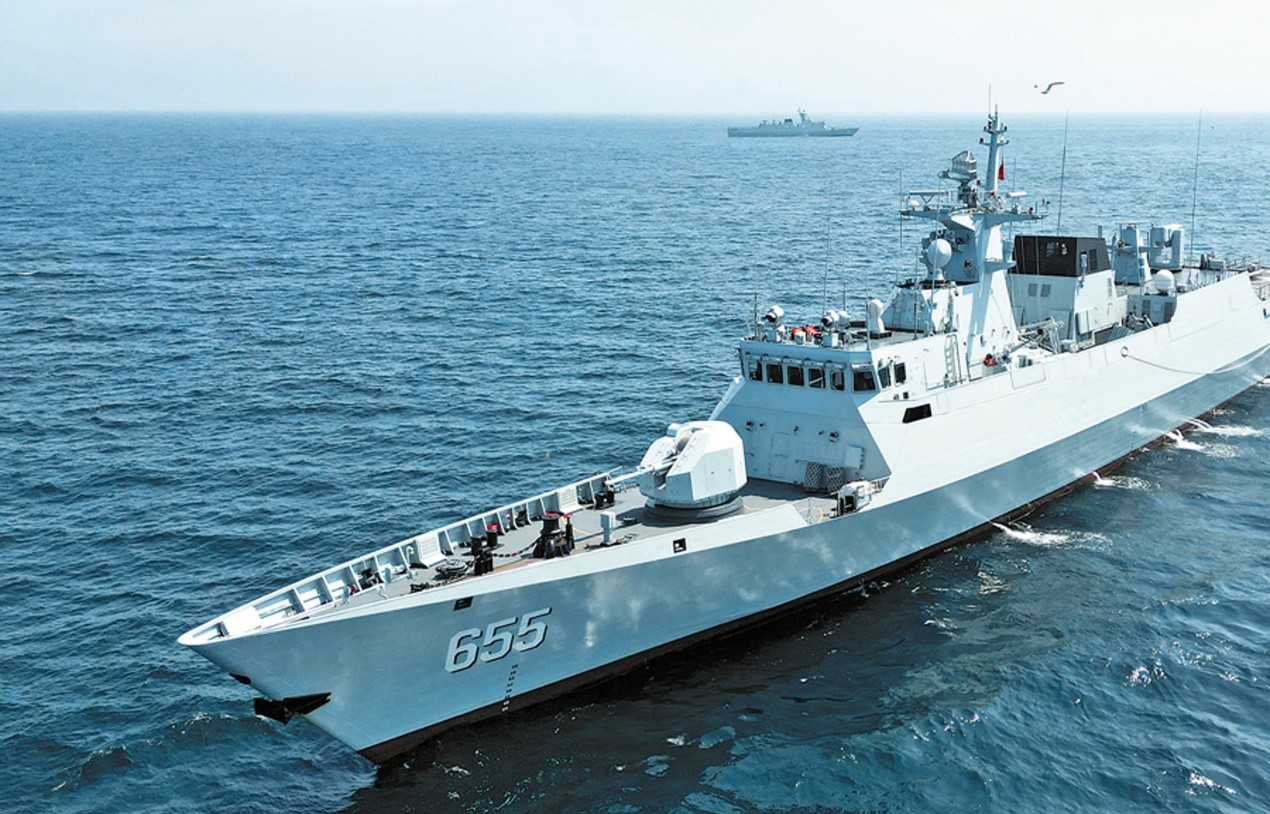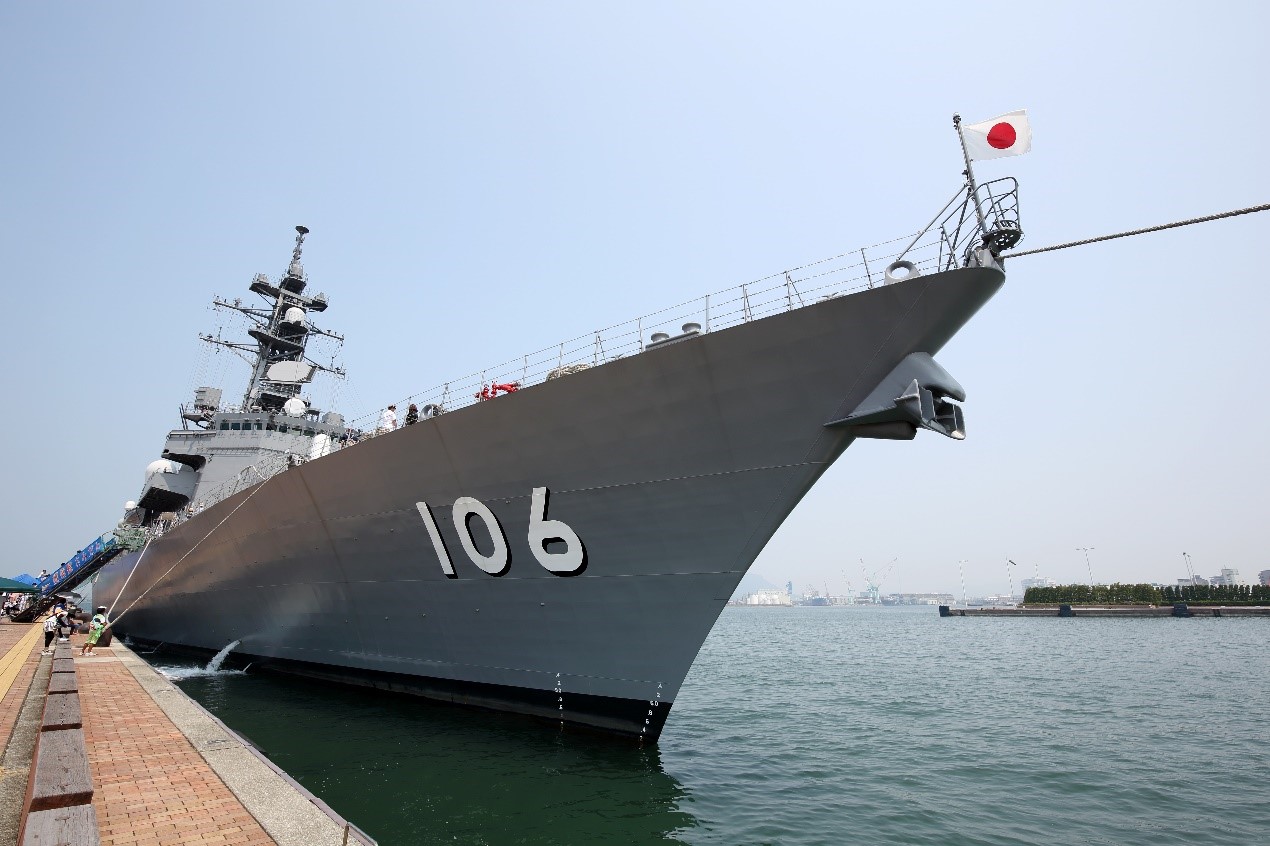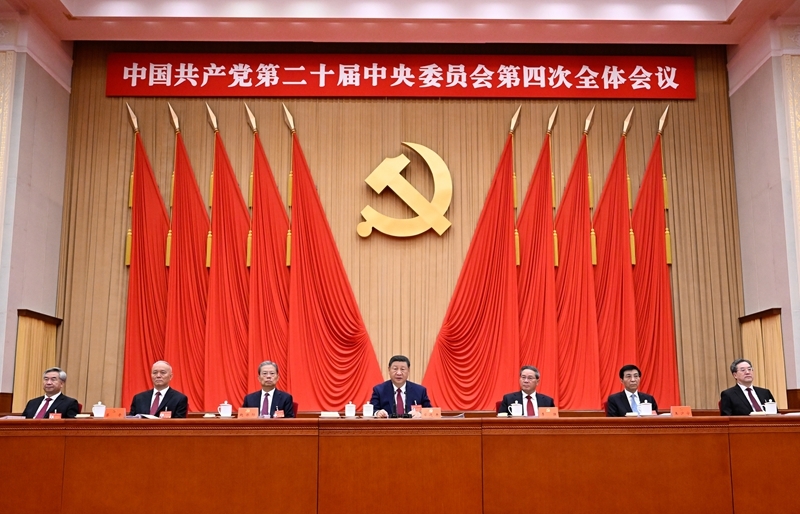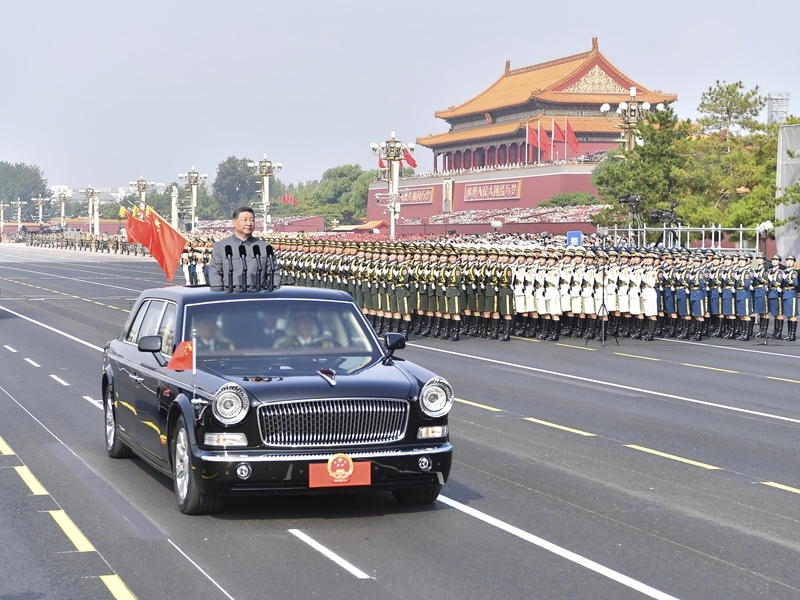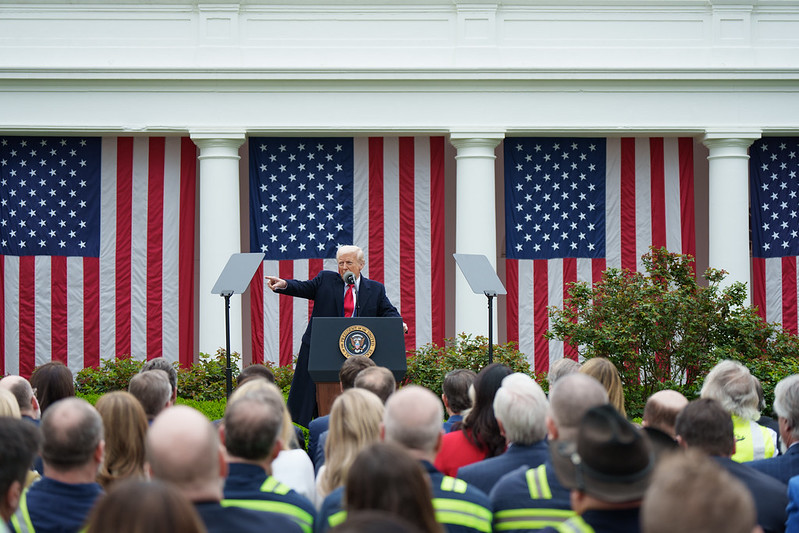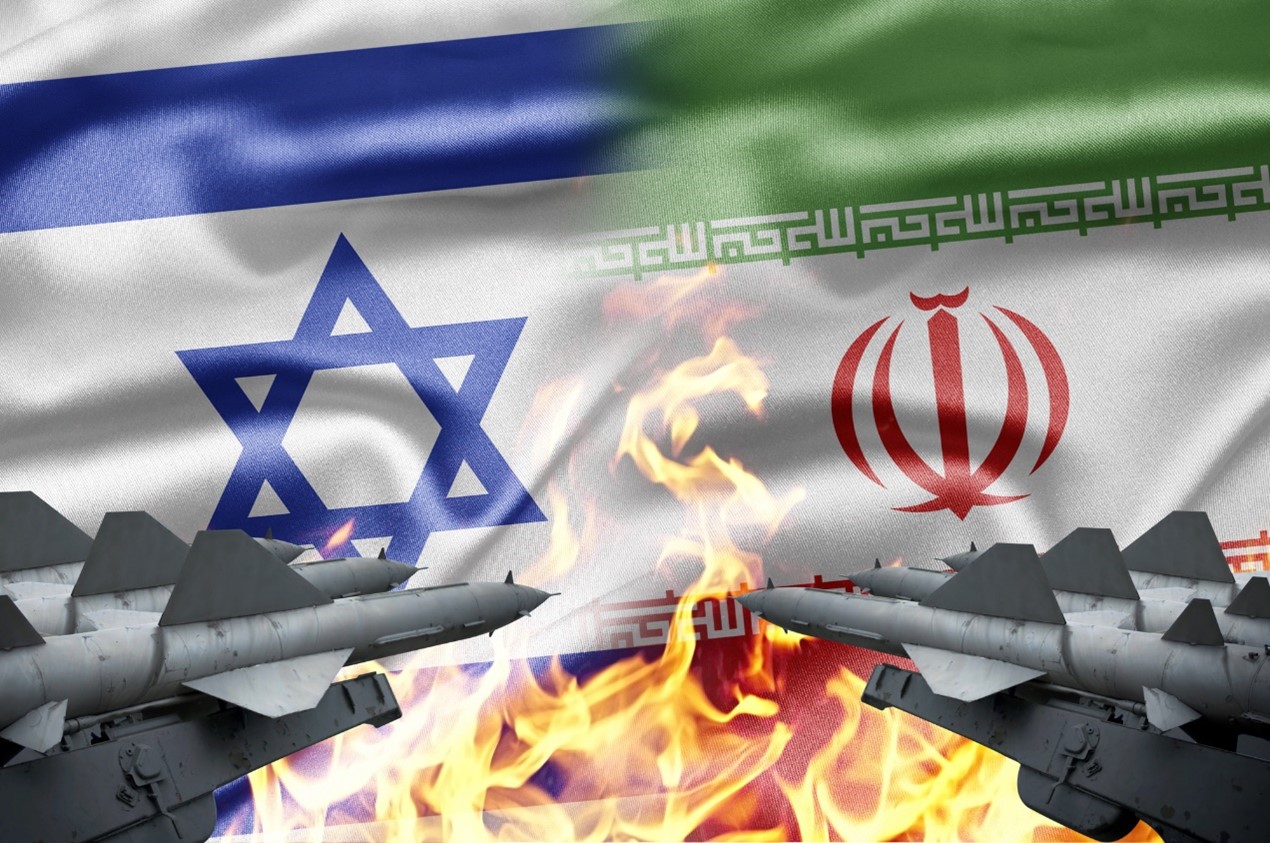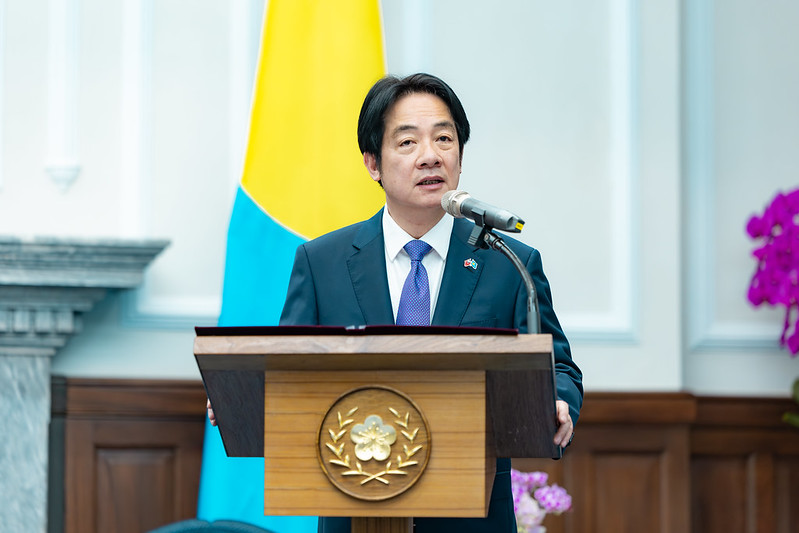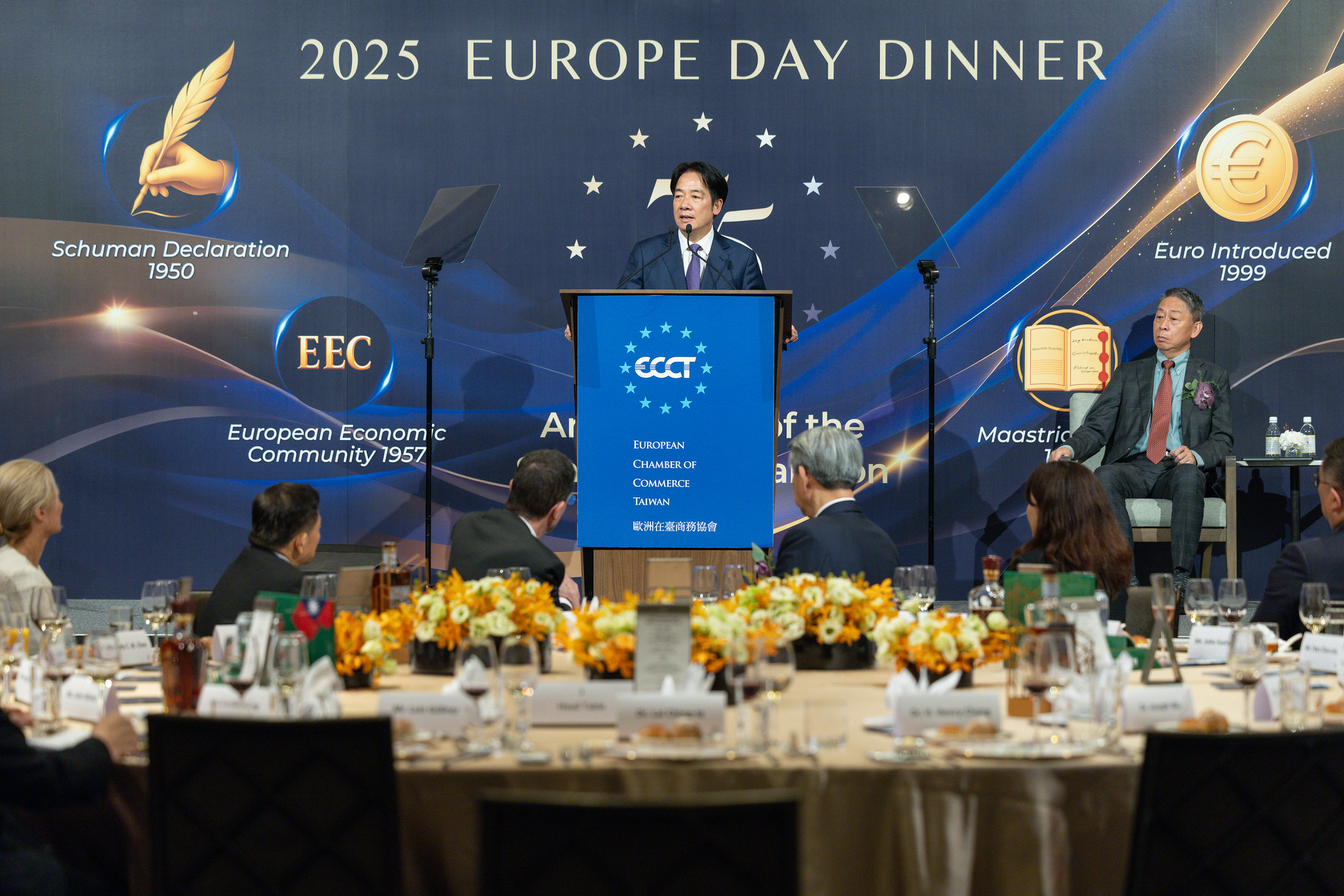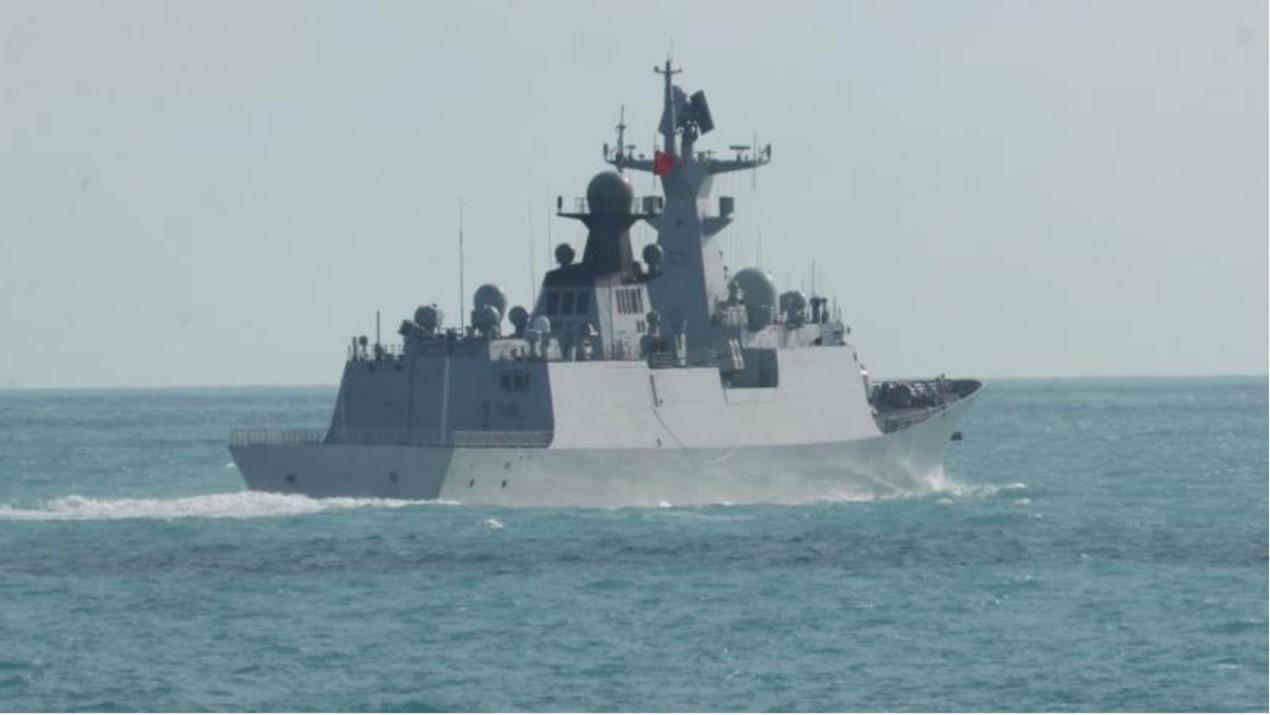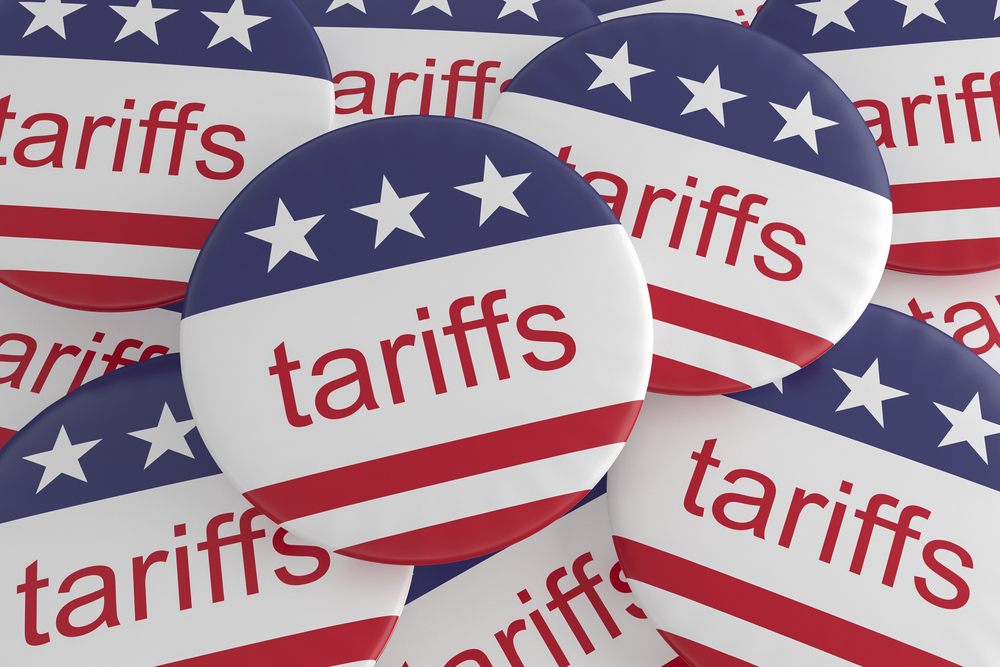A PRC air-maritime blockade spanning across the entire near-seas, including East and South China Seas, is expected to affect global seaborne commerce. This could yield the potential of a collective naval response in defense of SLOCs, perhaps led by the Americans and joined by close regional allies and partners – in direct challenge to Beijing’s blockade. Picture source: Ministry of National Defense (China), November 26, 2024, Ministry of National Defense (China), http://www.mod.gov.cn/gfbw/wzll/hj/16354162.html.
Prospects & Perspectives No. 5
The Specter of a Broader Regional Maritime Conundrum Over Taiwan
By Collin Koh
The much anticipated Joint Sword 2024C did not materialize late last year —or at least, Beijing did not label its last major maneuvers around Taiwan as such.
Yet the message meant to be conveyed is ominous: on the date and time of its own choosing, without any prior notice, Beijing could elect to mobilize in large scale its air and maritime assets, not just in the immediate environs around Taiwan but more broadly, across the adjacent near-seas enclosed within the First Island Chain.
Sea change
Since August 2022, when the People’s Republic of China (PRC) launched the first large-scale military exercise around Taiwan, the pattern of sustaining the scope of such activities has become obvious. Not only these military maneuvers are tightly coordinated and synchronized, but they also reflect a sea change in Beijing’s growing armed might.
The first factor is that the People’s Liberation Army (PLA) is flush with a newfound force capacity that enables it to make available air and naval assets for days-long, sustained presence around Taiwan. This represents a far cry from the past, when the PLA was handicapped by a very limited arsenal of assets that could be capable of such undertakings, in particular long-range, force projection platforms – major surface combatants and multi-role fighter jets. It is not just the individual asset (capability) that matters, but also having the right numbers of such assets (capacity) to allow sustained military maneuvers.
During the 1990s Taiwan Strait crises, the PLA would have to be contented with lobbing missiles from its land-based launchers into waters close to Taiwan. Besides that, and relatively unsophisticated wargames along the Fujian coast, the PLA back then possessed no viable answer to American naval supremacy and to a large extent, Taiwan’s superior air and naval capabilities.
Fast forward to today, a new equation has emerged – one that would signal to Beijing that its decades of military modernization efforts, while debatable in terms of real effectiveness, might have paid off. Back during the 1995-96 crises, American aircraft carriers could send a veritable signal to the PRC leadership by deploying in plain sight well within the Taiwan Strait. But in August 2022, the carrier Ronald Reagan confined her presence to the Philippine Sea – which could have been taken by Beijing as a clear sign of American weakness, in the backdrop of potentially growing dangers of operating in a tight waterway when the mainland side musters a new range of anti-ship weapons.
Greater complexity
The second factor is that the PLA maneuvers around Taiwan have become more complex, requiring a requisite level of jointness between the various services and branches. It isn’t just the regular air and naval forces operating increasingly in an integrated fashion, but also in conjunction with land-based strategic missile forces and information/electronic warfare units conducting cognitive warfare against the Taiwanese society. As the December maneuvers have shown, this level of integration has broadened to include PRC paramilitary forces, in particular the coastguard.
And the forces involved are no longer confined to just a single theater. While the PLA is no stranger to cross-theater training and maneuvers, this was well played out in the December drills, with the Eastern Theater Command joined by its sister commands in the North and South. This effectively allowed Beijing to tap forces across the adjacent theater commands to support any future Taiwan contingencies, depending on scenario. While the extent to what this level of force integration has been effective remains elusive, it is clear that the PLA is on the right track of preparing its forces for complex military operations in future Taiwan contingencies.
All in all, the PRC military and coastguard maneuvers are no longer confined to just the immediate environs of Taiwan. Whether one envisages a full-scale invasion of Taiwan, or an air-maritime blockade of the island, Beijing’s war planners might have come to recognize that a wider regional conflict, as opposed to a limited one localized just to Taiwan Strait, is inevitable. It would have to consider American military intervention and by extension, that of close U.S. allies in the region – especially Japan and the Philippines.
Strategic depth
While not all U.S. allies and partners in the region would necessarily partake in combat operations in and around Taiwan, the fact of the matter is that these countries also overlook key strategic waterways, such as the Miyako Strait and Bashi Channel, which would not only serve as passages for American military forces emanating from Guam for example, but also for PLA air and naval forces to take the fight as far out beyond the First Island Chain to incoming American forces to the east. In particular, based on past and present PRC writings, the envisioned campaign theater to combat U.S. military intervention would be found in the Philippine Sea. From a strategic standpoint, it makes full logical sense: it allows the PLA to destroy American forces as far out east of the First Island Chain before they could partake in hostilities over Taiwan, or at least neutralize them enough as to limit their effectiveness operating in the area. Keeping this strategic depth of active defense also means reducing, to an extent, the American long-range missile threat to mainland PRC, thus allowing Beijing to secure its economic and political centers as best as possible.
Of course, forcing passages through those key waterways would mean having PLA forces run the gauntlet of fire from Taiwan itself, as well as forward-deployed U.S. forces in the theater and those of Japan and possibly the Philippines. In other words, a Taiwan conflict is not destined to be comfortably confined to just the island and its surrounding environs. The adjacent East and South China Seas are inevitably part of the anticipated combat theater – whether one is talking about a full-scale invasion, or an air-maritime blockade of Taiwan.
Worth discussing further is the prospect of a PRC air-maritime blockade on Taiwan. Whether such blockade is imposed only on the close air and sea approaches to the island, or more widely spilling into the East and South China Seas, there is almost no guarantee that those sea lines of communications (SLOCs) so critical to regional economic well-being would be impervious to any impact. A PRC air-maritime blockade spanning across the entire near-seas, including East and South China Seas, is expected to affect global seaborne commerce. This could yield the potential of a collective naval response in defense of SLOCs, perhaps led by the Americans and joined by close regional allies and partners – in direct challenge to Beijing’s blockade.
Hence, while the prospect of pulling off such a blockade might at best be mired in uncertainty, what Beijing might have attempted to achieve is to impress upon the regional governments – especially U.S. allies and partners – the dangers of politically supporting Taipei. By expanding the military maneuvers to the East and South China Seas, Beijing possibly wished to demonstrate its escalation dominance to deter external actions in support of Taiwan and associated American military movements during times of hostility. This is a risky gambit of course, though PRC leaders are likely gambling with the prospect that a potentially wider regional conflict – not least the specter of a maritime conundrum – could cast regional players into a strategic dilemma.
(Collin Koh is Senior Fellow at the Institute of Defence and Strategic Studies, a constituent unit of the S. Rajaratnam School of International Studies, based at Nanyang Technological University, Singapore.)


